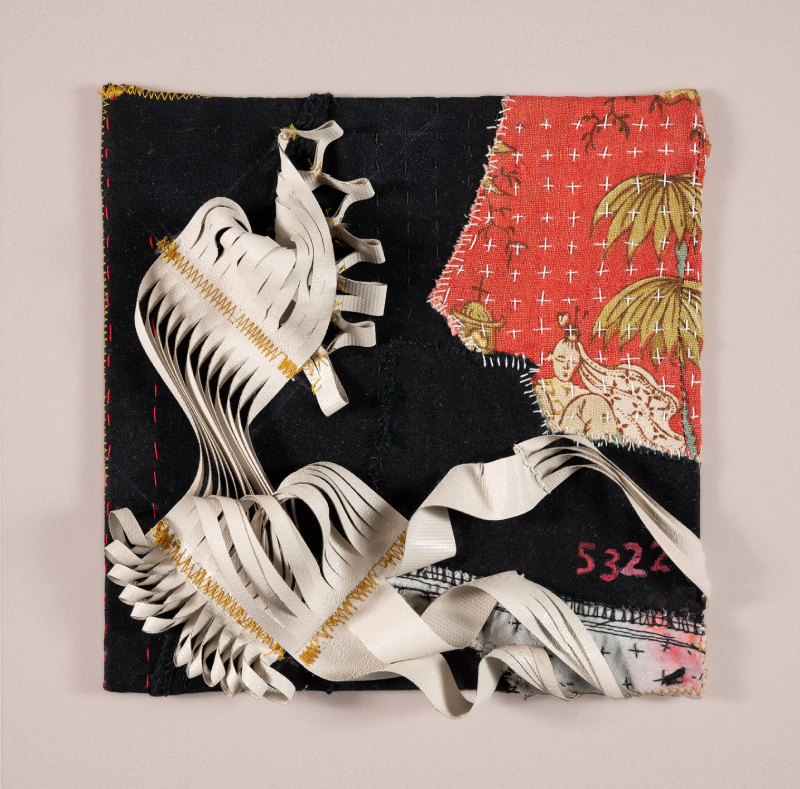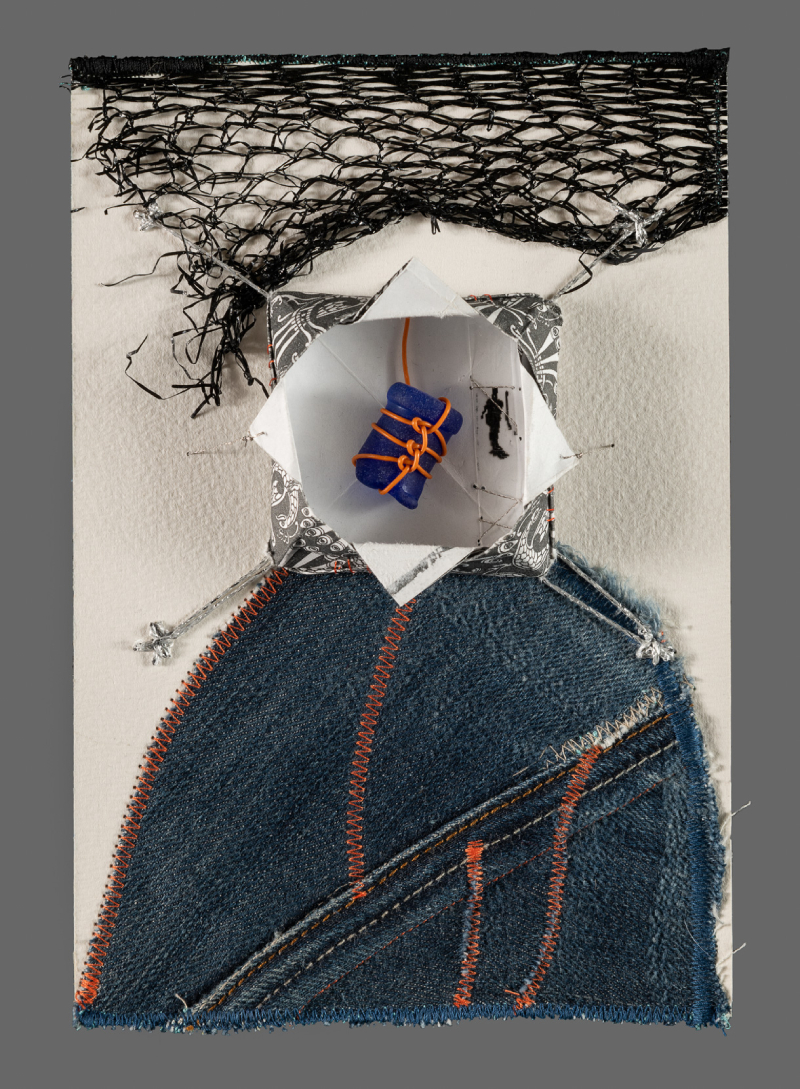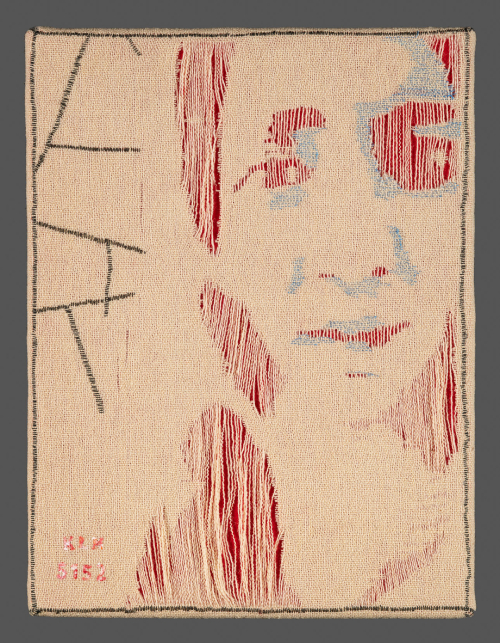
How did you start with art?
My childhood has been fairly free – as long as the mess remained in the garden and I wasn’t causing trouble. There is always a crossover between art and experimental play in which you can learn about material behaviour. I have spent many young hours grinding sandstone with mica particles to try to extract glitter and ending up becoming engrossed in the markings and geological tide marks that the stone holds. My work hasn’t always been abstract, but my preference in how I choose to express what I want to say tends more in that direction.
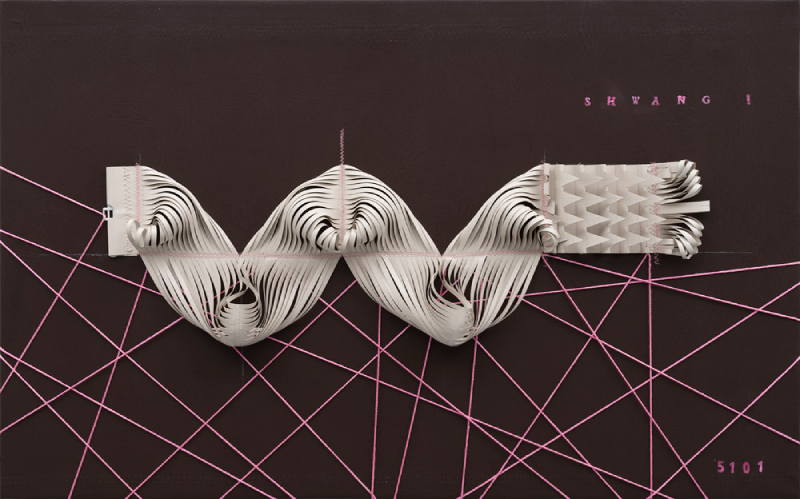
...a material’s perceived nature is dependent on the scale at which it is viewed
What artists or movements have had an impact on you?
I love the way el Anatsui can take metal tins and other rigid recycled materials and turn them into lush, draped fabric-like pieces. It reminds me that a material’s perceived nature is dependent on the scale at which it is viewed. His work is a cloth at building scale, a rigid flat tin at hand scale, an open mesh at molecular scale, the void between galaxies at an even smaller scale.
I also love the work of Ampara de la Soto, whose stitch work is like ancient writing or animal tracks set in a geological strata.
Mo Kellman’s work speaks to my fascination for structure and natural geometry.
What themes come up in your art and do the memories and personal experiences reflect?
Layered traces of time come up often in my work, much of which incorporates recycled materials as these items carry their own histories. Reusing materials also helps me escape excessive nostalgia as that item’s history is not lost, but becomes integral to its new place. Sometimes, the history is not directly incorporated, but imprinted on surfaces instead, which adds new possibilities or layers for presentation or dialogue.

Layered traces of time come up often in my work, much of which incorporates recycled materials as these items carry their own histories
What is the significance of material and color?
At the start of the most recent wave of migrations, we saw desperate people braving treacherous Mediterranean waters to come to European shores through fear and hope. If I had to leave my home with little warning, what would I take with me?
The base of my piece has been created from functional cordage such as old boat ropes which have assembled into a fabric using macramé - a technique thought to be of shipping origins. The colours are natural: rust, indigo and stains from previous usage.
Over this base hangs a fringe of wool strands. Each colour represents a different country and on every strand is that country’s refugee intake based on the 2012 UNHCR refugee movement data. The numbers are recorded using quipu, the ancient accounting knotting technique of Andean peoples such as Incas. For me, it was sobering to find that many of the countries taking in the higher numbers of people have been often countries with few resources themselves.
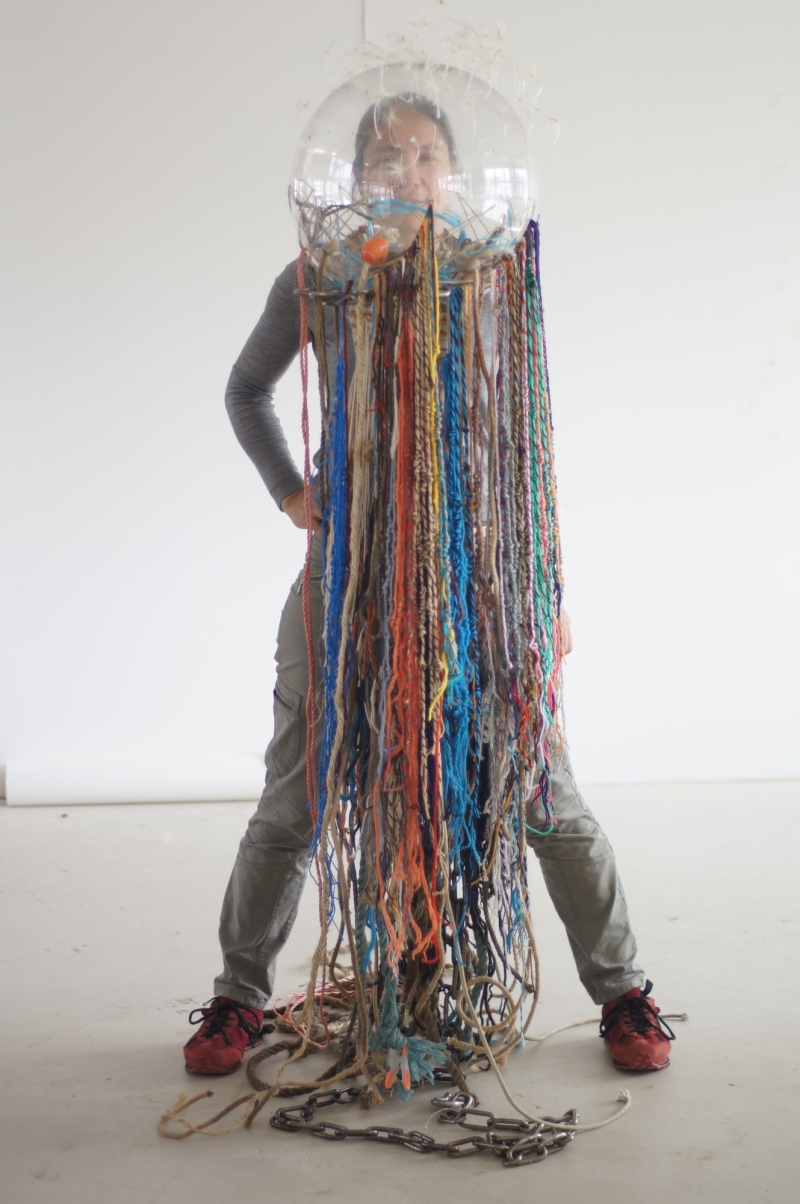
Who or what are some of your artistic inspirations?
In addition to those mentioned in Q2, I should also add Agnes Varda and Mona Hatoum. Agnes Varda resonates with my inner conversation about footprint and what we leave behind as an individual or as a species. Mona Hatoum connects with me in a more visceral sense. I love her sense of geometry, light and shadow, sound, which is almost meditative, even when she is speaking of dread and fear.
What are you working on right now and what is next?
I am going through things that I have kept over many years – birthday cards, notes and letters, photographs, flyers and posters, business cards, dried flowers – and I am recording them photographically before blending them to make new paper. At the time of blending, I note the date and use this to decide what to record, imprint or stitch onto the new paper. Sometimes I layer these sheets in a way that recalls MRI slices or geological strata. There is something of Michael Landy’s “Art of Destruction” but for him, everything went to landfill, whereas I would like to keep the essence of the original items and to carry this significance into a new piece. In this body of work, I am also dabbling between the existence of things in analogue and in digital.
What is your favorite art accident?
Discovering the effect of ethanol on fax paper.
What do you consider the role of an artist today?
There are many divides that can be difficult to broach. Some divides are there because of current situations – customs, geopolitics or trauma – and can seem so large as to be insurmountable. I consider that the work of the artist is to create a conversation. Through conversation come bridges. If we can experience work that is inspirational, even if it only speaks to us at a single node in our lives, even if it comes from an ancient source instead of a modern one, it can help us question, resolve and uplift. Nothing changes if we don't wonder whether there might not be another way to understand things.
Source: https://upwardgallery.com/ad/interviews/kim-ling-morris-i-consider-work-artist-create-conversation
